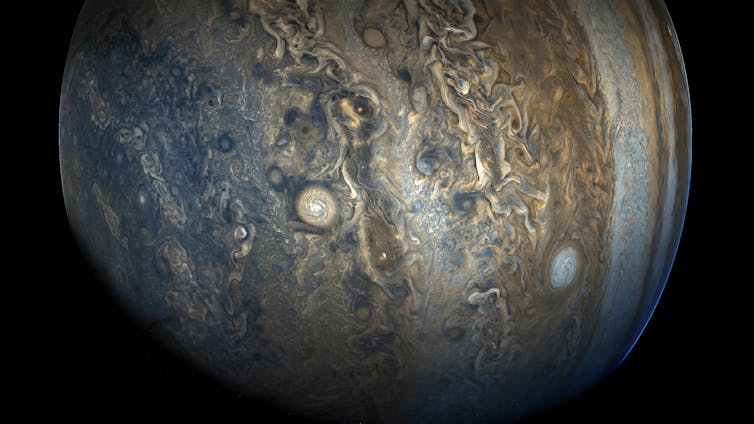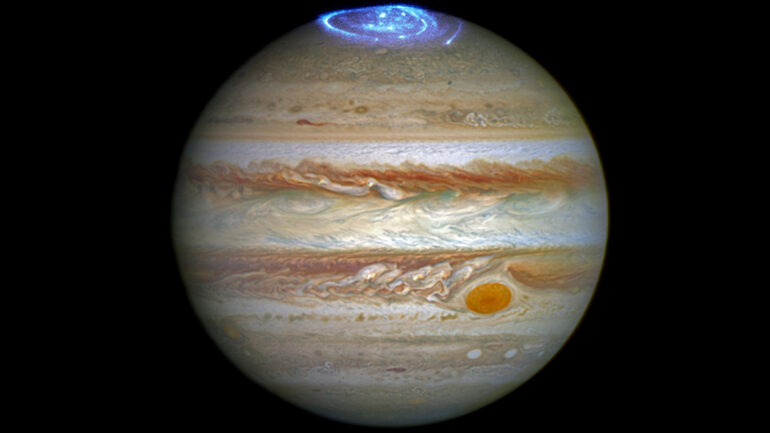
Curious Kids is a series for children of all ages. If you have a question you’d like an expert to answer, send it to [email protected].
Why does Jupiter look like it has a surface – even though it doesn’t have one? – Sejal, age 7, Bangalore, India
The planet Jupiter has no solid ground – no surface, like the grass or dirt you tread here on Earth. There’s nothing to walk on, and no place to land a spaceship.
But how can that be? If Jupiter doesn’t have a surface, what does it have? How can it hold together?
Even as a professor of physics who studies all kinds of unusual phenomena, I realize the concept of a world without a surface is difficult to fathom. Yet much about Jupiter remains a mystery, even as NASA’s robotic probe Juno begins its ninth year orbiting this strange planet.
Jupiter’s mass is two-and-a-half times that of all the other planets in the solar system combined.
First, some facts
Jupiter, the fifth planet from the Sun, is between Mars and Saturn. It’s the largest planet in the solar system, big enough for more than 1,000 Earths to fit inside, with room to spare.
While the four inner planets of the solar system – Mercury, Venus, Earth and Mars – are all made of solid, rocky material, Jupiter is a gas giant with a composition similar to the Sun; it’s a roiling, stormy, wildly turbulent ball of gas. Some places on Jupiter have winds of more than 400 mph (about 640 kilometers per hour), about three times faster than a Category 5 hurricane on Earth.

A photo of the southern hemisphere of Jupiter, taken by NASA’s Juno spacecraft in 2017.
NASA/JPL-Caltech/SwRI/MSSS/Gerald Eichstadt/Sean Doran
Searching for solid ground
Start from the top of Earth’s atmosphere, go down about 60 miles (roughly 100 kilometers), and the air pressure continuously increases. Ultimately you hit Earth’s surface, either land or water.
Compare that with Jupiter: Start near the top of its mostly hydrogen and helium atmosphere, and like on Earth, the pressure increases the deeper you go. But on Jupiter, the pressure is immense.
As the layers of gas above you push down more and more, it’s like being at the bottom of the ocean – but instead of water, you’re surrounded by gas. The pressure becomes so intense that the human body would implode; you would be squashed.
Go down 1,000 miles (1,600 kilometers), and the hot, dense gas begins to behave strangely. Eventually, the gas turns into a form of liquid hydrogen, creating what can be thought of as the largest ocean in the solar system, albeit an ocean without water.
Go down another 20,000 miles (about 32,000 kilometers), and the hydrogen becomes more like flowing liquid metal, a material so exotic that only recently, and with great difficulty, have scientists reproduced it in the laboratory. The…



